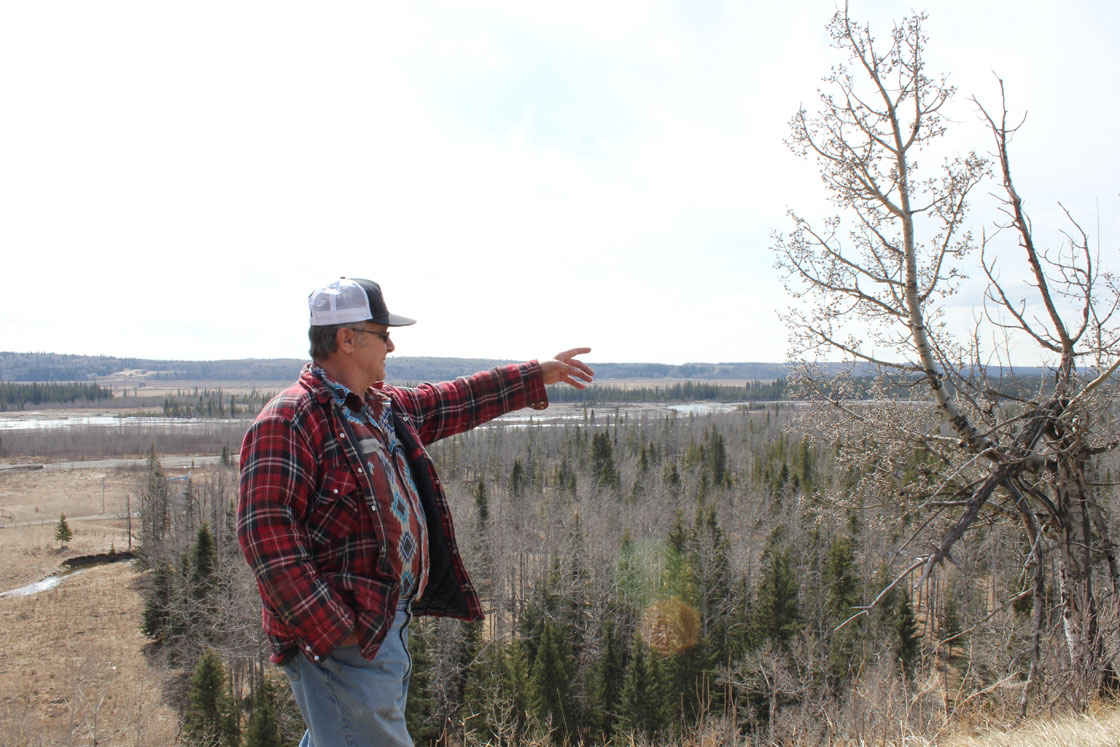On June 7, 2012, a Plains Midstream pipeline leaked more than 3,000 barrels of crude oil into Jackson Creek, north of Sundre, Alberta. The oil flowed from the creek into the flooded Red Deer River and up into Glennifer Lake, threatening the town of Red Deer’s water supply.

The spilled crude seeped onto the property of many people living along the banks of the river. Global News spoke to some of them in April 2013. Here’s how they remember that day:
Dennis Overguard
Dennis Overguard was one of the first to report the spill, he says, as the strong fumes alerted him that something was wrong. But he couldn’t leave.
“I had actually had a heart attack a month before, and I was down here and then, because of the heart attack I didn’t have a driver’s license,” he said.
He spent two hours sitting in his living room, inhaling the fumes from the spill, as he waited for his wife Joanne to come home from a nursing course. After leaving the house, their first stop was the hospital.
“When she got back here to me, it had actually collapsed arteries in my heart. So I ended up in Sundre, then straight to Calgary and they put in four more stents in my heart.”
Overguard said he couldn’t return back home because of the fumes. He said he spent 126 days living in a Sundre-area bed and breakfast and eating meals in local restaurants at Plains Midstream’s expense.
“They didn’t want a dead man on their hands.”
Ila Johnston
VIDEO: Ila Johnston describes the Red Deer River oil spill.
“It was a really hot afternoon and we were outside. I was working in the flowerbeds, and all of a sudden this horrible stench came in. It was unlike anything we’d really smelled before,” Johnston says. And it wasn’t the usual hydrogen sulfide.
“We’re very aware of what H2S smells like, that sort of thing.” But this was something different. “And it took my breath away.”
Ila asked her husband Wayne Johnston to take her to the hospital.
“I couldn’t get my breath,” she said. “I’ve got hypersensitive airways that take very little – even exhaust sometimes will set me off. So I had Wayne take me to the hospital, and they put me on oxygen there, and right away there was a big improvement.”
Wayne Johnston
It smelled like “Hell,” he says. “It was actually between sour and sweet gas. It was just an ungodly smell. You know, it wasn’t nice at all.”
“I knew there was a bad break somewheres. This is what happens when they have a bad break. You know darned well when this smell comes in. To describe it right dead-on, you can’t, but you know when it’s here.
“At that time I did not know how bad it was or where exactly, but I knew it was upstream because the wind was coming down the river at us. I knew it had to be a pipeline break because it was that bad.”
Wayne rushed his wife Ila to the hospital because she was having trouble breathing. He then realized that his mother was still back on his property, so he said he rushed back to get her to the hospital too.
“It was dark-coloured crude oil up on the trees, the branches, up from the ground right up to this high,” he says, gesturing about to his knees.
“It was unreal, the amount of crap that was coming down that river.”
Read more: What it’s like to have oil running through your backyard
In-depth, interactive: Crude Awakening – 37 years of Alberta oil spills
- What is a halal mortgage? How interest-free home financing works in Canada
- Capital gains changes are ‘really fair,’ Freeland says, as doctors cry foul
- Ontario doctors offer solutions to help address shortage of family physicians
- Canada will take bigger economic hit than U.S. if Trump wins election: report






Comments